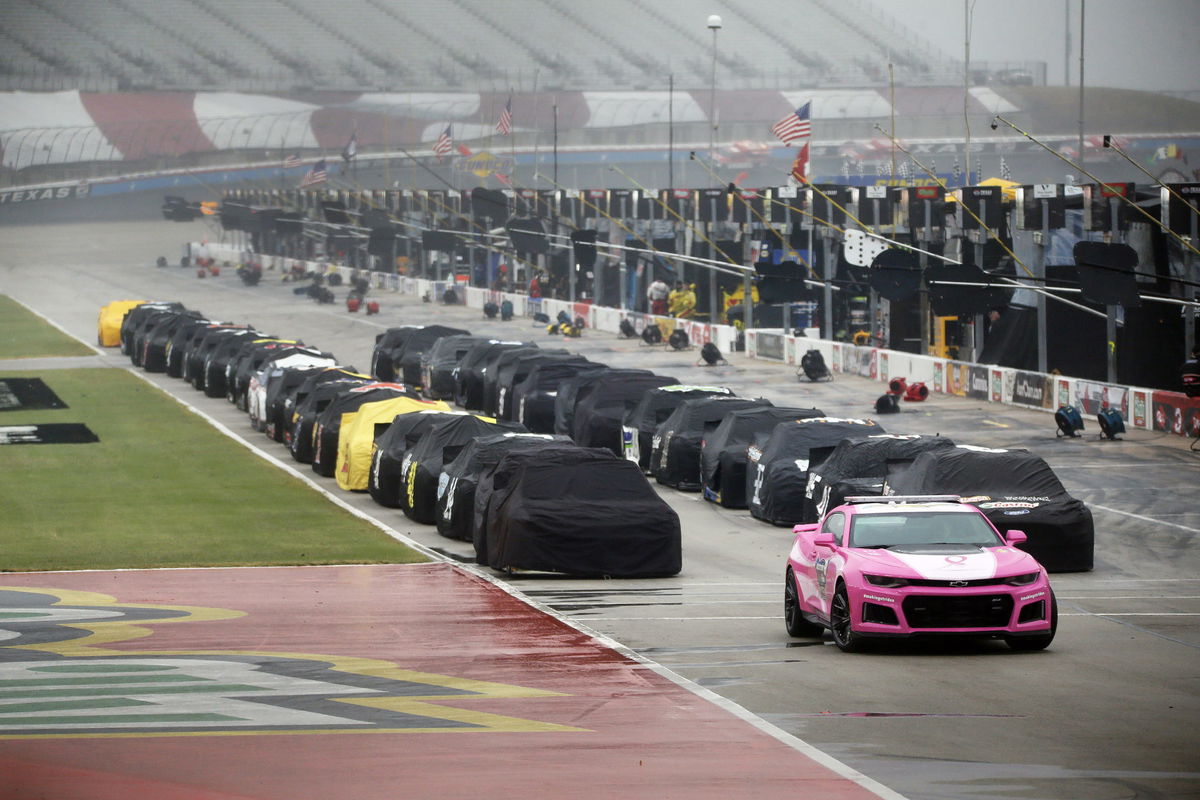
USA Today via Reuters
Oct 25, 2020; Fort Worth, Texas, USA; Race cars sit covered on pit row as a heavy mist falls delaying the Autotrader EchoPark Automotive 500 at Texas Motor Speedway after 52 laps. Mandatory Credit: Raymond Carlin III-USA TODAY Sports

USA Today via Reuters
Oct 25, 2020; Fort Worth, Texas, USA; Race cars sit covered on pit row as a heavy mist falls delaying the Autotrader EchoPark Automotive 500 at Texas Motor Speedway after 52 laps. Mandatory Credit: Raymond Carlin III-USA TODAY Sports
NASCAR and Mother Nature were at it again in Michigan. From the ARCA qualifiers on Friday getting canceled to a 17-hour red flag during the Cup race, rain was indeed the flavor of the weekend. A little August drizzle is not too uncommon in the Midwest. But when the National Weather Service predicted a 72-82% chance of rain affecting outdoor activities, NASCAR had to consider its scheduling options.
Watch What’s Trending Now!
Now, for a sport that caters to multiple stakeholders at a single event, a reschedule does not come as easily as Tyler Reddick made his rain-delayed win look this past Monday. However, to address widespread calls from fans and drivers for earlier race start times, NASCAR’s Chief Revenue Officer, Brian Herbst, appeared on The Dale Jr Download, and explained why the sanctioning body remains committed to their 3 P.M. start times.
ADVERTISEMENT
NASCAR explains how rain delays affect viewership and who calls the shots
Many have discussed whether NASCAR could implement early start times consistently in future schedules. However, speaking during his recent podcast appearance, Brian Herbst made it clear, stating: “When discussions like this happen, there tend to be no perfect answers. We do the best we can with the imperfect scenarios balancing all the different stakeholders that are in the sport. It’s the fans at the track; it’s the fans that are watching at home. It’s the teams, it’s the drivers, it’s the sponsors, it’s the TV partners.”
Explaining the bigger picture of the larger conglomerates involved in making these decisions, Herbst continued, “So in any scheduling discussion that we have, market-by-market, or start times itself, you’re talking about six-seven-eight different sets of stakeholders. OEMs, sponsor partners that we take into consideration whenever we make a call like that.” In reality, this reasoning by NASCAR’s Chief Media & Revenue Officer reveals the nuts and bolts of the broader reality of most decisions made by the sanctioning body. But most believe the latter is catering to a few very important groups from that collective—specifically, the sponsors and the broadcast partners.
Although the sport could use all the sponsors that approach it, with the mass exodus of backers we’ve seen in recent times, the primary broadcast partners FOX & NBC have been long under fire. This past weekend, the wider NASCAR community had a bone to pick with the postponement of the race till Monday, instead of running it out fully or with fewer laps on Sunday. Some, like 2021 Cup champ Kyle Larson reminisced about the 1 p.m. start from his rookie season.
ADVERTISEMENT
Dale Jr, on the other hand, didn’t mince his words on X: “Mid afternoon start times. Short term gain. Long term detriment”.
Yet, Herbst explained that “the rule of thumb that we (NASCAR) use, for every hour that we start later, that’s an extra 5% in viewership. So if we start at 3 PM versus 1 PM, that’s about 10%. So 5% an hour, 10% for those two hours. For a race that we’re running at 3 PM that draws an average of 3 million viewers, we would expect that race to draw 2.7 million viewers if we ran it at 1 PM, blended across different kind of averages.” In short, “you’re looking at giving up 300,000 viewers or so if you run a little bit earlier versus later.”
ADVERTISEMENT
The Firekeepers Casino 400 has been hit by inclement weather a total of six times—five since 2000—since its first edition under the ‘Yankee 400’ banner in 1969. But this year specifically raised quite a commotion after the rain canceled practice and qualifying, with conditions delaying its 3 p.m. start time by almost 2 hours on Sunday. According to Sports Media Watch, the race ran for 51 laps and averaged 2.11 million viewers between 4:56 p.m. and 5:41 p.m. before showers over MIS postponed the action to 11 a.m. ET on Monday.
View this post on Instagram
However Dale Jr argues that NASCAR and their coverage partners do not wish to meddle with that slot since it serves the numerically stronger audiences of the NFL. They would avoid competing against any show that’s going to have a large audience so they don’t want to go up against the NFL at 1:00,” the veteran said before adding how media deals take precedence over audience comfort, “The TV deals are as large as they are the networks are going to want to try to maximize their advertising dollars and get all of that money back and then some more. And so they need to put these races where they feel like they’ll get the best numbers.”
ADVERTISEMENT
Conversely, a notable few talked about the on-track numbers, which assumedly declined at MIS after the race’s postponement to the following day. But as all these stats come forth, NASCAR appeared to be making steady advancements. And it all began with split-screen advertisements during a select few races in the rest of NBC’s broadcast coverage for 2024.
Top Stories
Ross Chastain Labels NASCAR Driver “The Most Punchable Face” to Excuse Himself Over Punchgate Controversy
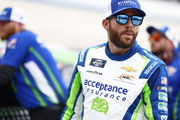
Commissioner Steve Phelps Quits NASCAR Days After Getting Exposed in Lawsuit Trial
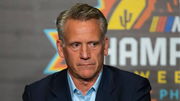
Jimmie Johnson Poaches Richard Childress’ Key Ally Ahead of NASCAR 2026 Season
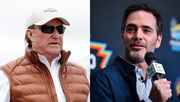
When Rick Hendrick Walked Away From $1,000 to Avoid Dale Earnhardt Sr’s Wrath
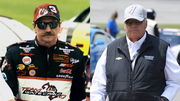
Who Is Steve Phelps? NASCAR Commissioner’s Net Worth, Wife & NASCAR Contract
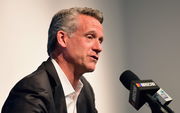
A constant struggle between fans and the sport
As Denny Hamlin vented on his podcast earlier, “Man, we (NASCAR) have chased ratings for so long. We’re willing to be on different networks and we’re going to streaming and our start times are all over the place. Just chasing ratings. Chasing it…” After all, ratings attract sponsorship. Even Hamlin himself agreed that as a team owner at 23XI Racing, “we’re so sponsorship-based”. It does not come as a surprise, as racing is not a poor man’s sport by any means. Case in point: Hamlin once revealed how it takes $18 million a year to put a car on the racetrack.
ADVERTISEMENT
In the current scheme of things, race teams are still vying for a more reasonable share of the $7.7 billion media rights pie, which will hand over NASCAR’s streaming rights to four partners instead of two, with six networks now in the mix. This little development will no doubt influence the scheduling decisions soon-to-be-announced for the 2025 season.
Notably, Herbst has hinted at “being open” to a more consistent schedule. But with the way things go in NASCAR, expecting consistency from all the stakeholders and natural forces involved can be a long shot.
But to counter another widespread issue of dissatisfaction, which partially takes the power away from the people with too much of it, NBC Sports recently announced an exciting development. Addressing the concerns of excessive ad breaks (during crucial moments) as pointed by fans, the next three superspeedway races at Daytona, Atlanta, and then Talladega, will not feature full-screen ads, hoping to provide a more balanced and enjoyable home viewing NASCAR experience.
ADVERTISEMENT
With each passing day, the sport and its deepest admirers find newer ways to be at odds with each other. However, one thing is clear—when the fans speak, NASCAR listens. Sometimes the fans’ demands and opinions help the governing body make better-informed decisions. Other times, actions and suggestions can be detrimental to the image of stock car racing. Regardless, this tightrope can only find balance in the sometimes chaotic, often impressive world of NASCAR racing.
ADVERTISEMENT
ADVERTISEMENT
ADVERTISEMENT

